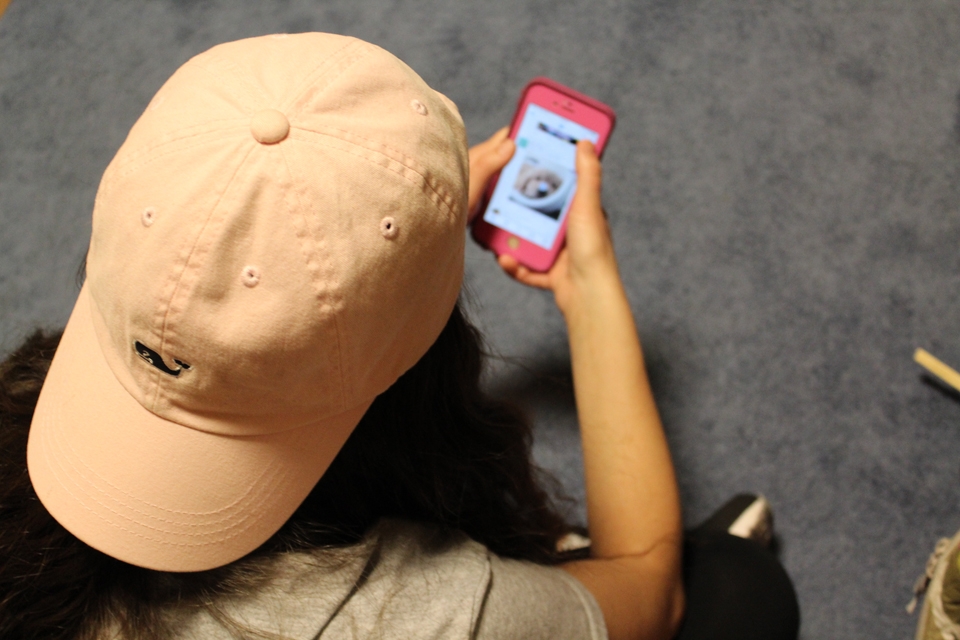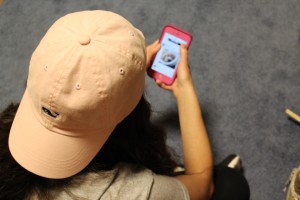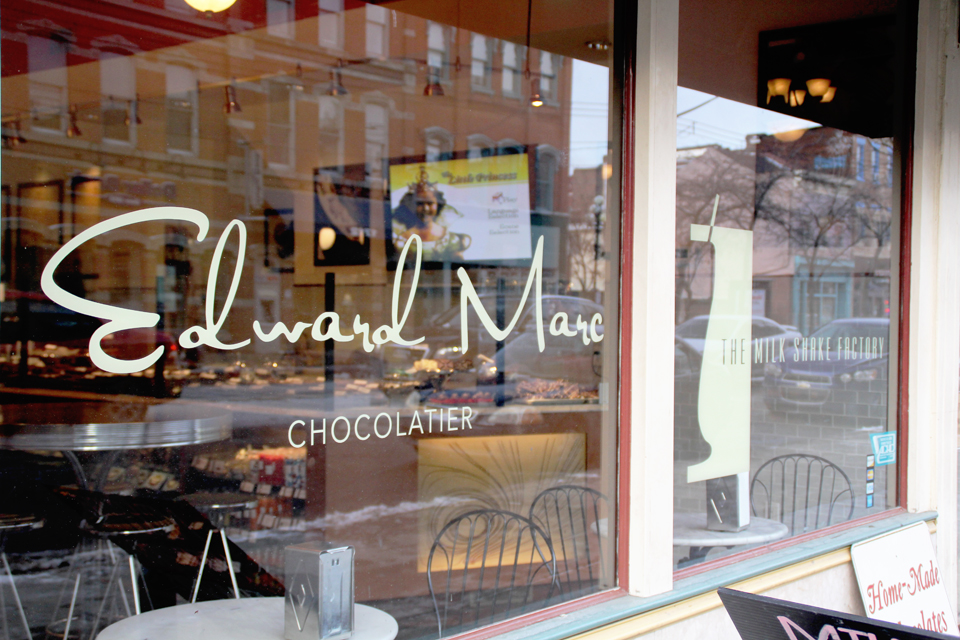

Duquesne student Gigi Vaccaro uses her cell phone. The SES evaluations were updated last year become more mobile-friendly. The forms are considered by department heads for professor evaluations and promotion considerations.
By Raymond Arke | The Duquesne Duke
It’s that time of year where students across campus are inundated with emails and reminders from professors to “Say Yes to SES.” However, despite recent changes to the SES form, not all students are convinced that filling out Duquesne’s Student Evaluation Surveys is worth the time and effort.
The surveys, which are open to students between April 4 and April 25 on Blackboard, allow students to give feedback on their professors and classes.
Ethan Shetty, a freshman business undecided major, said he does not plan on completing the surveys.
“I have no interest in filling it out,” he said. “If there is an incentive, I would be more likely to do it.”
Shetty is not alone — many students do not take time to fill out the SES forms, according to Matthew Ussia, an English professor at Duquesne.
He believes the university can do more to encourage students to participate.
“I have taught places where the [evaluations] are done on Scantron sheets with number two pencils,” Ussia said. “That seems to work a little better than what we are doing.”
He lamented just how few students turn them in.
“Any class with a response rate 60 percent or above is a win,” Ussia said.
He said he takes the suggestions from the surveys to heart.
“I try to adjust my classes to fit student needs every single semester I teach a particular course,” Ussia said. “The changes aren’t big, but 10 to 30 percent of every class I teach is different, and hopefully improved.”
Duquesne has begun marketing the surveys more widely on campus.
“We run a promotional campaign, ‘Say Yes to SES,’ that includes handing out cookies in the Union, putting up fliers around campus and sending reminders to students and faculty about the dates that the survey is open,” according to Alexandra Gregory, associate provost for academic affairs at Duquesne.
Gregory said the administration is working to create a higher turnout rate.
“University-wide, the response rate for fall 2015 was 57 percent, and this is about the participation rate that we have had in recent semesters,” she said.
Duquesne wants teachers to get involved too.
“We also ask faculty members to remind their students to take the SES and suggest that they set aside a few minutes during class so students can do that,” she said.
Aside from providing feedback on classes, the SES also plays a role in faculty evaluations.
Ryan Garvey, head of the finance and economics departments in the Palumbo School of Business, said department chairs take the results of SES very seriously.
“Full-time faculty are often evaluated based on their teaching, research, and service performance,” Garvey said. “The SES is one measure that is used by the university to evaluate faculty teaching performance.”
Garvey said what students report on the SES can impact how a professor fares when it comes time for promotions.
“They are considered for both faculty annual raise and promotion reviews,” Garvey said.




